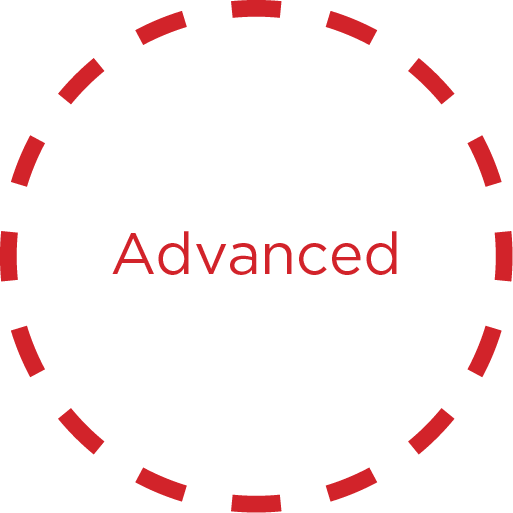 Image 1 of
Image 1 of


Advanced with Leyzer Burko: Ukrainian Yiddish: Sunday 12:00 – 1:30 PM: Feb. 23, Mar. 2, 9, 16, 23, 30, Apr. 6, 27, May 4, 11
Advanced with Leyzer Burko: Ukrainian Yiddish
Sunday 12:00 – 1:30 PM: Feb. 23, Mar. 2, 9, 16, 23, 30, Apr. 6, 27, May 4, 11
Course Goals: This course will explore Ukrainian Yiddish, once also widely spoken in Romania, Moldova, and Poland. It served as the standard dialect in Yiddish theater and film and was also used by famous writers like Sholem Aleichem. The Hasidic movement, as well as many of today's Hasidic groups (e.g., Skver, Breslov, etc.) originated in Ukraine. Because many more Jews survived there than in Poland and Lithuania, the dialect continues to be spoken throughout the post-Soviet diaspora, even by contemporary writers (e.g. Boris Sandler). Focusing mainly on the spoken dialect, we will cover varieties like the famous tote-mome-lushn, in which /a/ shifts to /o/. We will examine the history of the dialect and see how it came to occupy a middle ground between Polish and Litvish dialects. Students will learn how Ukrainian and Romanian have influenced the vocabulary. By the end of this course, students will be able to understand the spoken dialect and identify its distinctive features in written texts.
Course Tools: Interviews, folklore, and song recordings from archival sources including The Language and Culture Archive of Ashkenazic Jewry, Dov-Ber Kerler's AHEYM project (Archives of Historical and Ethnographic Yiddish Memories), and Isaac Bleaman's Corpus of Yiddish Spoken in Europe.
Additional Info: This course is taught entirely in Yiddish.
Advanced with Leyzer Burko: Ukrainian Yiddish
Sunday 12:00 – 1:30 PM: Feb. 23, Mar. 2, 9, 16, 23, 30, Apr. 6, 27, May 4, 11
Course Goals: This course will explore Ukrainian Yiddish, once also widely spoken in Romania, Moldova, and Poland. It served as the standard dialect in Yiddish theater and film and was also used by famous writers like Sholem Aleichem. The Hasidic movement, as well as many of today's Hasidic groups (e.g., Skver, Breslov, etc.) originated in Ukraine. Because many more Jews survived there than in Poland and Lithuania, the dialect continues to be spoken throughout the post-Soviet diaspora, even by contemporary writers (e.g. Boris Sandler). Focusing mainly on the spoken dialect, we will cover varieties like the famous tote-mome-lushn, in which /a/ shifts to /o/. We will examine the history of the dialect and see how it came to occupy a middle ground between Polish and Litvish dialects. Students will learn how Ukrainian and Romanian have influenced the vocabulary. By the end of this course, students will be able to understand the spoken dialect and identify its distinctive features in written texts.
Course Tools: Interviews, folklore, and song recordings from archival sources including The Language and Culture Archive of Ashkenazic Jewry, Dov-Ber Kerler's AHEYM project (Archives of Historical and Ethnographic Yiddish Memories), and Isaac Bleaman's Corpus of Yiddish Spoken in Europe.
Additional Info: This course is taught entirely in Yiddish.
Advanced with Leyzer Burko: Ukrainian Yiddish
Sunday 12:00 – 1:30 PM: Feb. 23, Mar. 2, 9, 16, 23, 30, Apr. 6, 27, May 4, 11
Course Goals: This course will explore Ukrainian Yiddish, once also widely spoken in Romania, Moldova, and Poland. It served as the standard dialect in Yiddish theater and film and was also used by famous writers like Sholem Aleichem. The Hasidic movement, as well as many of today's Hasidic groups (e.g., Skver, Breslov, etc.) originated in Ukraine. Because many more Jews survived there than in Poland and Lithuania, the dialect continues to be spoken throughout the post-Soviet diaspora, even by contemporary writers (e.g. Boris Sandler). Focusing mainly on the spoken dialect, we will cover varieties like the famous tote-mome-lushn, in which /a/ shifts to /o/. We will examine the history of the dialect and see how it came to occupy a middle ground between Polish and Litvish dialects. Students will learn how Ukrainian and Romanian have influenced the vocabulary. By the end of this course, students will be able to understand the spoken dialect and identify its distinctive features in written texts.
Course Tools: Interviews, folklore, and song recordings from archival sources including The Language and Culture Archive of Ashkenazic Jewry, Dov-Ber Kerler's AHEYM project (Archives of Historical and Ethnographic Yiddish Memories), and Isaac Bleaman's Corpus of Yiddish Spoken in Europe.
Additional Info: This course is taught entirely in Yiddish.

